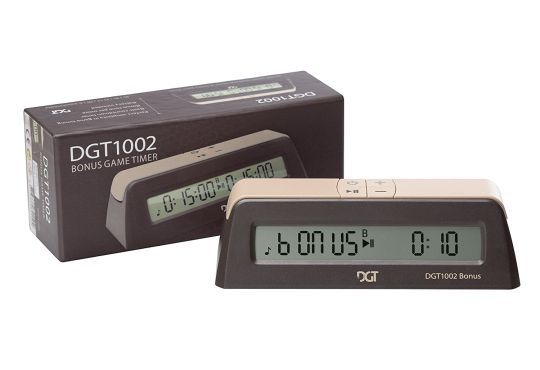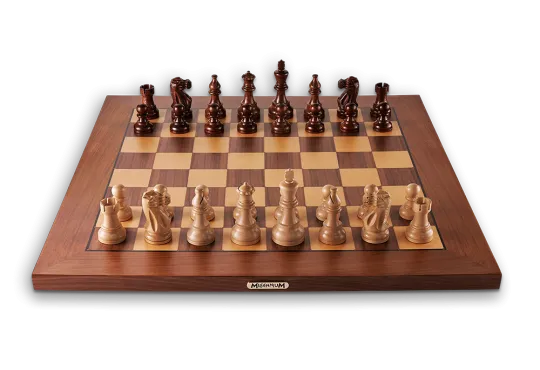The Five Worst Openings To Play In Chess For Black
There are plenty of chess openings that promise to alleviate Black's tempo deficit, but what about the very worst openings to play in chess for Black?
In this article, we’ll explore five truly terrible Black openings. Some descend into checkmate in the first few moves, while others simply leave Black with an untenable position. We’ll be explaining how to capitalize on all of them if you’re playing as White.
Can you guess which ones we’ve included? Perish the thought you’ve played some of them on your worst days! Let’s find out.

Table of contents
The Damiano Defense
The most common first three alternate moves in beginner and intermediate chess are 1.e4 e5 2.Nf3. Since its e5 pawn is now threatened, Black will usually respond by protecting the pawn with either 2...Nc6 or e6.
Another seemingly reasonable, yet fatally flawed response for Black at this point is 2...f6 - the Damiano Defense.

Why the Damiano Defense is a Losing Opening for Black
While playing f6 might appear a reasonable move to beginner chess players, closer examination reveals it as a dubious move in many openings, and possibly the worst opening to play in chess after 2. Nf3. Here’s why:
Weakens the Kingside
Playing 2...f6 immediately opens up the king to diagonal attacks from the kingside.
Nine times out of ten, the king is also castled to safety on the kingside….. This means strong pawn structure in front of the king is extremely important to offer adequate protection. Playing f6 immediately weakens this structure, opening up opportunities for enemy attack.
-
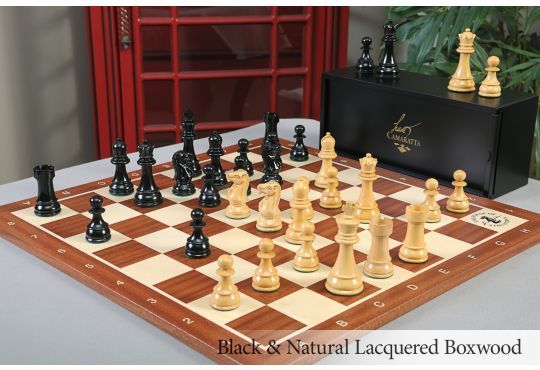 Free Worldwide Shipping
The Windsor Tournament Series Wood Chess Set, Box, & Board Combination Enjoy Savings of 24% Off MSRP When Purchased as a Combination
Free Worldwide Shipping
The Windsor Tournament Series Wood Chess Set, Box, & Board Combination Enjoy Savings of 24% Off MSRP When Purchased as a Combination$377.95
Starting at $319.00
To $378.95
Blocks the King’s Knight
The natural square to develop the king’s knight is the f6 square. By placing a pawn there, the immediate development of the knight is blocked, weakening Black’s influence over the center of the board.
The Damiano Trap - White Wins a Rook!
The most critical reason that 2...f6 should always be avoided is the deadly Damiano Trap! If White knows how to exploit Black’s folly, Black can easily wind up losing a rook. The line follows:
1. e4 e5 2. Nf3 f6 3. Nxe5 fxe5 4. Qh5+ g6 5. Qxe5+

Here the Queen forks the king and the rook. Since Black can do nothing to cover both pieces, it loses a rook. At four points down and in a very precarious position after the exchange, Black’s chances of making a comeback are slim. that makes this opening one of the worst chess openings for black.
The Duras Gambit
1.e4 f5, known as the Duras Gambit is an extremely doubtful opening for Black. This aggressive first move often leads to swift losses of position, material, or both.

Why the Duras Gambit is a Losing Opening for Black
Loses a Pawn
The most immediate stumbling block of the Duras Gambit is that it loses a pawn without sufficient compensation. Although there are some interesting lines for Black to pursue, none justify the reckless entry into the game.
Kingside Vulnerability
By opening up the f-file, the king becomes immediately vulnerable to diagonal attacks from the flank. White can play Qh5+ at any point, which, as you’ll see from the line below, can prove deadly.
The Duras Gambit Trap - White Promotes a Pawn in Six Moves!
After 1.e4 f5, 2. exf5, Black must play Nf6 to prevent White from playing Qh5+, a move that can easily cost Black further material losses.
But many beginners may fail to spot the danger. For example, if Black plays a fairly natural move like 2...Nc6, 3.Qh5+ means Black only has one move to block the check: 3...g6
-
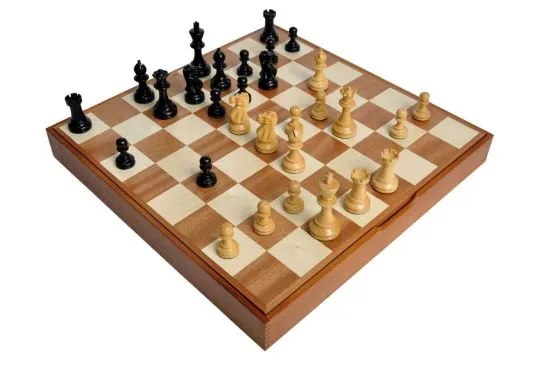 Free Worldwide Shipping
The Grandmaster Chess Set and Casket Combination Enjoy Savings of 25% Off MSRP When Purchased as a Combination
Free Worldwide Shipping
The Grandmaster Chess Set and Casket Combination Enjoy Savings of 25% Off MSRP When Purchased as a Combination$318.00
Starting at $239.00
To $269.00
After White captures with 4.fxg6, recapturing with the rook’s pawn costs Black a rook. In blitz games, many opponents respond with 4...Nf6, attempting to chase the Queen away. This however misses a deadly discovered check 5.g7.
Now, Black’s only move is to capture the Queen with its knight, leaving White free to capture its rook and promote a pawn with 6.gxh8. White is now six points up on material, and Black’s kingside is left in ruins.

Better Variations for Black
The Duras is not a commendable opening at any level. But there are attacking themes that can save Black from a hopeless position if White allows.
After castling on the kingside, Black’s rook immediately piles pressure on the open f-file towards White’s kingside. For those who enjoy similar game plans in the King’s gambit, you could try this out for fun.
The Copycat Trap
When learning chess, there is often a natural inclination to emulate superior opponents. But emulation is not the same as imitation! To copy every move an opponent makes is an excellent shortcut to losing the game. Nowhere is this more painfully obvious than The Copycat Trap, an opening where mirroring White costs Black a queen.
The opening begins with a legitimate opening for Black: Petrov’s Defense (aka. The Russian Game).
After 1. e4 e5 2. Nf3, instead of 2...Nc6, Black mirrors White with 2...Nf6.

Why the Copycat Trap is a Losing Opening for Black
There is nothing wrong with this symmetrical position. But if White chooses to capture the pawn (3. Nxe5 - the Classical Variation), Black must quit its game of mimicry. At first glance, countering with 3...Nxe5 appears reasonable (a move that 50% of beginners follow with). But things start to get dicey when White plays 4.Qe2

In this diagram, notice how the two knights are the only pieces obscuring a check on the e-file. If Black moves its knight now, White can spring a fatal discovered check: Nc6+, effectively winning Black’s queen. Ouch!
Better Variations for Black
Petrov's Defense is actually a strong opening for Black that can lead to many interesting possibilities, including the infamous Stafford Gambit.
After 3.Ne5, Black must refrain from mirroring and instead play one of three good moves. 3...d6 is the main line that tends to lead to solid but rather dull positions.
Much more interesting for beginner and intermediate players is the Stafford gambit 3...Nc6. Another possibility is 3...Qe7 which offers to reverse the discovered check trap shown above. It’s amazing how many opponents get caught out!
-
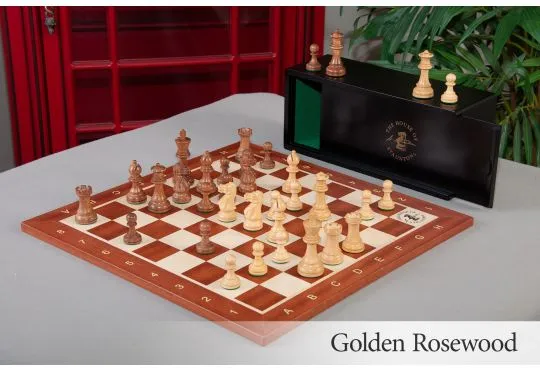 Free Worldwide Shipping
The Library Grandmaster Chess Set, Box, & Board Combination Enjoy Savings of 18% Off MSRP When Purchased as a Combination
Free Worldwide Shipping
The Library Grandmaster Chess Set, Box, & Board Combination Enjoy Savings of 18% Off MSRP When Purchased as a Combination$277.95
Starting at $229.00
To $303.95
-
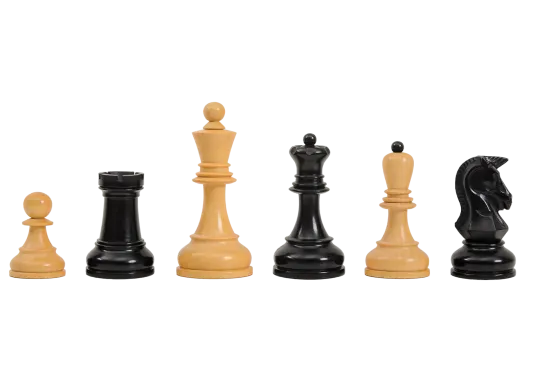 Free Worldwide Shipping
The DGT Projects Enabled Electronic Chess Pieces - Dubrovnik Series - 3.75" King
Free Worldwide Shipping
The DGT Projects Enabled Electronic Chess Pieces - Dubrovnik Series - 3.75" KingStarting at $559.00
To $1,838.00
Borg Defense & Borg Gambit
The Borg Defense (aka Basmaniac Defense) is one of the fastest ways for Black to forfeit its kingside. Although the opening does offer Black some interesting traps, it's a perilous strategy, especially against a skilled opponent.
Also known as the ‘Basmaniac Defense’, after "the most bizarre player in the universe" International Master Michael Basman. The opening hit center stage when he played it in the 1980 British Championship.
In the Borg Defense, Black answers 1.e4 with 1...g5.

Why the Borg Defence is a Losing Opening for Black
The Borg is very rarely played. Why? It is surely one of the worst chess openings for Black!
2...g5 Doesn’t Control the Centre
One of the most fundamental priorities of almost any good opening is to take control of the center of the board. Even playing c-pawns or f-pawns helps with this, but pawns on the b- and g-files offer little influence.
Awkward to Defend
Another drawback of playing g5 for Black is the pawn is awkward to defend. As we’ll see in a moment, defending with f6 is dangerous for Black’s king. With no minor pieces able to immediately offer protection, playing h6 is the only tenable way to defend the pawn – a move that is equally ineffectual as the first.
Vulnerable to Quick Checkmate
As we discovered in the previous two openings, opening up the kingside flank can be extremely dangerous so early in the game.
In answer to 1...g5, White will often play 2.d4. This takes full control of the center while attacking Black’s outlying pawn with the dark-squared bishop. Now Black must be careful. If the natural 2...f6 is played, White scores one of the fastest wins in chess with 3.Qh4#. Yes, that’s essentially a reversed Fool’s Mate!

Better Variations for Black
There are a few reasons that a few maverick chess players still enjoy startling opponents with 1...b4, one of them being the Borg Gambit.
The Borg Gambit – an Outrageous Way to Win a Rook!
The Borg Gambit is rather like Grob’s Attack for Black (indeed, Borg is simply Grob spelled backward!). Instead of defending its g5 pawn from White’s inevitable attempts to capture it, Black sacrifices it and plays 2...Bg7.
-
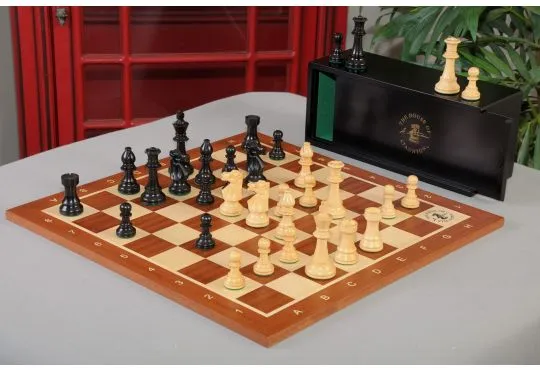 Free Worldwide Shipping
The Club Series Chess Set, Box, & Board Combination Enjoy Savings of 18% Off MSRP When Purchased as a Combination
Free Worldwide Shipping
The Club Series Chess Set, Box, & Board Combination Enjoy Savings of 18% Off MSRP When Purchased as a Combination$267.95
Starting at $219.00
To $293.95
If White captures with 3.Bxg5, it leaves its b2 pawn undefended and X-rayed by Black’s fianchettoed Bishop. Black can now challenge White’s pinned pawn by playing c5.
In blitz games, White may simply fail to spot the X-ray altogether and capture dxc5. Black swoops in with its Bishop: Bxb2, and White is helpless to save its rook.

If White doesn't blunder, Qb6 can be played to add more pressure on b2 and d4 simultaneously. Even if White allows the Bishop in, however, Black is only one point up on material after White recaptures - little compensation for its markedly inferior position.
The Borg Gambit can also follow the queen's pawn opening (1.d4 b5) with similar themes – an equally poor opening for Black.
The Fried Liver Attack
The infamous Fried Liver Attack is usually thought of as an opening for White. But the opening relies on Black making five moves, the last of which being a mistake. Such a common and simple mistake that it deserves to be pointed out as a treacherous opening for Black!
The line goes: 1. e4 e5 2. Nf3 Nc6 3. Bc4 Nf6 4. Ng5 d5 5. exd5 Nxd5

Why the Copycat Trap is a Losing Opening for Black
The terrible thing about the Fried Liver Attack is that it requires only Black to play the most natural moves. On the face of things, 5...Nxd5 appears to be entirely reasonable. But White has a cunning plan up its sleeve: 6.Nxf7, and Black is forced to capture with its king 6...Kxf7.
White now scoops a devilish fork with 7.Qf3+, effectively winning its knight back and leaving Black in a precarious position. Amazingly, by far the most frequently played next move by beginners spells game over for Black: 8...Nd4 allows White to move in for the kill: 9.Qf7# - a tidy scholar's mate.

Better Variations for Black
In the opening line of the Fried Liver Attack, Black does everything right up until the critical move: 5...Nxd4. Luckily, there are other options for Black to win an even position. Playing 5...Na5 leads into a counterattack that can lead to dangerous possibilities for Black if White fails to play the right moves.
The Worst Opening for Black? You Decide
After reading about the worst chess openings for black, you’ll probably agree that they’re all appalling ways to start the game. But which is the worst?
The next time you’re playing a weaker opponent in a friendly game, why not try one of them out to give White a sporting chance? Starting the game badly can level the playing field and make the fight for a comeback all the more interesting.
If, on the other hand, you wish to learn the very best openings for Black, we’d highly recommend checking out our guide to the ten best chess opening books on the market.



